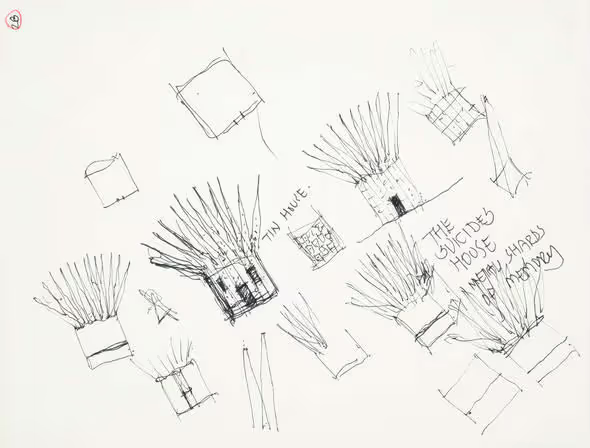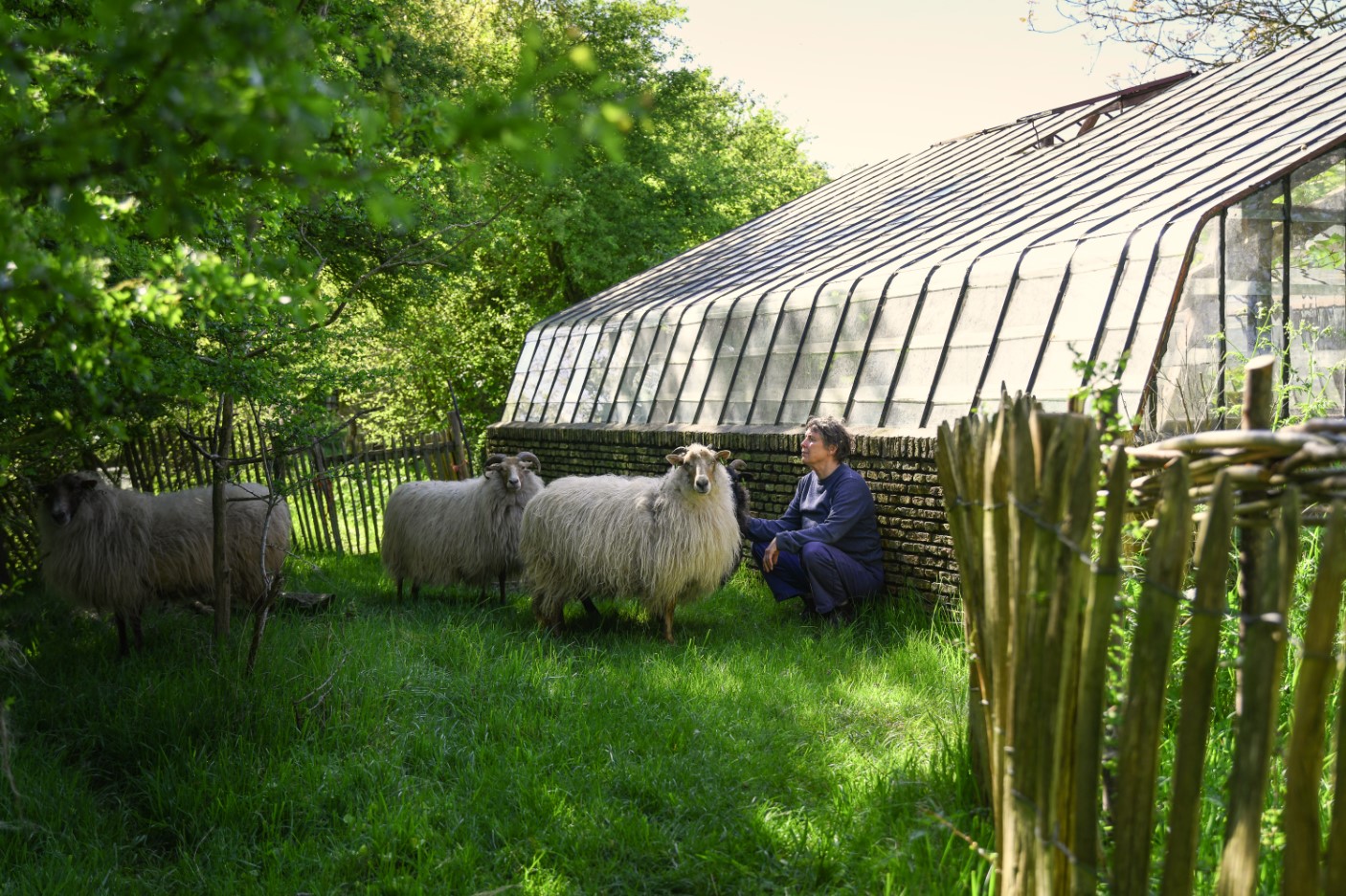► českou verzi článku najdete zde
The structures were manufactured by KRUNTORÁD, a Czech company, using designs provided by MCA architects, who were in charge of their construction and technical documentation. “It took us six month – from signing the contract with the Prague City Gallery to the delivery. Manufacturing, details, surface, connecting material – it was all very complex,” says Jan Kruntorád, the owner of KRUNTORÁD.
The memorial is an installation composed of two geometric structures with spikes – flames – and a plaque at the base of the installation. The House of the Suicide is made from brushed stainless steel plates of sheet metal which are commonly used in chemical plants or pools, where it gets in contact witch chemicals, such as chlorine. As such, it should be resistant to potential damage by vandals. The House of the Mother of the Suicide is made from Corten panels, which weather over time and create a rusty patina, which doesn´t corrode any further,“ says Jan Kruntorád to explain the dark brown tone of the second steel structure. “Nevertheless, this material is a tricky one, welding and connecting individual parts was quite elaborate. Both structures count around two kilometres of welded joints, which we had to polish to the final look,“ adds Jan Kruntorád.
Individual parts of both structures which were manufactured at the company´s manufacturing halls in Chotěboř were also partly assembled there. Subsequently, they were taken to Prague to be assembled there on the already prepared foundations. “We had worked on the structures almost until Christmas. In The House of the Mother of the Suicide, for example, we installed a platform for the stairs. We also had to finalize lighting,“ describes Jan Kruntorád further.

A drawing of The House of the Suicide was originally a part of twenty six drawings from a set called Masques, which Hejduk kept subsequently developing for several decades. In one of his comments to Hejduk´s work, James Williamson said: “He drew very much. He built very little.“ (Source of the image: CCA Collection)
The manufacturing process was under supervision of James Williamson, an internationally renowned architect and a Cornell University professor, who had worked already on the very first structures - Williamson and a group of his students from the Georgia Institute of Technology in Atlanta made the first steel structures and Williamson himself assisted in the manufacturing of the wooden structures which were donated to the Prague Castle. The family of the late architect Hejduk (1929 to 2000) asked James Williamson to supervise the third pair of structures, too. “The structures found their home in Prague," says Williamson and underlines that the objects are a symbolic materialisation of the freedom of imagination.
.avif)
The monumental models made from wood – The House of the Suicide and the House of the Mother of the Suicide were exhibited at the Prague Castle at the occasion of an 1991 exhibition of the works of John Hejduk („John Hejduk – Práce“). The exhibition took place under the auspices and on personal invitation by Václav Havel´s presidential office. (Photo: Jaro Zastoupil - Gampe, Wikimedia, September 1991, CC BY-SA 3.0)
Hejduk´s structures show reminiscence of and draw inspiration from different events, such as English costume parades of the 16th and 17th century, the Medusa from the Greek mythology, and Cézanne´s La maison du pendu, Auvers-sur-Oise featuring dead tree branches pointing to the sky above an abandoned houses. He also drew inspiration from The Funeral of Jan Palach, a poem by David Shapiro, an American poet, which became, already in the 1990´s, an integral part of the installation. “The Corten plaque with the poem was one of the key challenges,” says Jan Kruntorád about working on the monument on the Alšovo Embankment in Prague. With laser engraving, we had to correct all letters A, D, B, R, O, and P. It was a filigree job which, however, paid pack. It looks gorgeous.“
Prague has been considering the two structures in a more durable material since 2002, when two Czech architects - Václav Králíček and Stanislav Makarov – won a competition for the “Palach Square and Alšovo Embankment”. The original plan was to erect the two structures by John Hejduk in the middle of the Jan Palach Square, the winning design moved them to the Embankment.

The House of the Mother of the Suicide (upfront) has a small entrance. The structure is made from Corten (a special type of steel), which weathers nicely and its patina darkens over time (Photo: Jaro Zastoupil - Gampe, Wikimedia, December 2015, CC-BY-SA 4.0)
In 2012, the Council of the Municipality of Prague made the final decision to erect the memorial and initiated works on the implementing documentation. In 2014, the job was entrusted to the Prague City Gallery. „In 2013 to 2014, we prepared spatial models 1:1 on the spot, in cooperation with Jim Williamson, with whom we also consulted the public space around the structures,“ says Miroslav Cikán from MCA architects, the studio which, using Hejduk´s documentation and photos of the wooden structures, created new drawings to manufacture the two steel structures and the memorial plaque. “We mailed it all by post to the USA for Jim to look at, have a feel of it, and give us a final go,“ adds Miroslav Cikán.

Two interacting objects - The House of the Mother of the Suicide and The House of the Suicide. Upfront the plague with the poem The Funeral of Jan Palach. (photo: Material Times, January 2016)
In October 2015, the Municipality Prague 1 finished revitalisation of the park based on a project by MCA architects which derived from the award winning design dating back to the 2002 competition. Forty seven years after Jan Palach´s death, the structures which Hejduk once described as holding a special place within the history of architecture - smaller than buildings, larger than models, more than sculpture, objects which combine aspects of all three – now form a part of the public space at the southern part of the Alšovo Embankment in Prague. On Friday, January 15th, Miroslav Cikán reported that the structures received a certificate of occupancy and are now registered as houses.
The structures to commemorate Jana Palach, who, in 1969 in the Wenceslas Square in Prague, set himself on fire in protest of the invasion of the Warsaw Pact troops in Czechoslovakia, were erected close to the School of Applied Arts and the Charles University’s Department of Philosophy, the alma mater of Jan Palach. In the past, there were also plans made to place the structures outside the entrance to the Department of Architecture of the Czech Technical University in Dejvice. History of the monument, which is in the ownership of the Municipality of Prague, is well documented by an exhibition called The House of the Mother of the Suicide, The House of the Suicide which will remain open to the public till the end of January 2016 at the nearby Charles University’s Department of Philosophy.
„The waterfront location on the Alšovo Embankment is well chosen. The structures form an artistic counterpart to the panorama of the Prague Castle. In winter, the view of the two structures, reflected in the snow, is indeed breath-taking. From spring to autumn, when the trees dress in leaves, the structures at the edge if the Palach Square will be hidden behind the greenery thus hard to see from the opposite bank of the Vltava river. On the other hand, the trees will accentuate the feeling of isolation and make the space around the monument a good place for contemplation. It remains to be seen in spring, how the space around the structures will look like in the shade of trees,“ says Marie Foltýnová, one of the curators of The House of the Mother of the Suicide, The House of the Suicide and the curator of public sculptures of the Prague City Gallery.




%20(2)%20kopie.jpg)